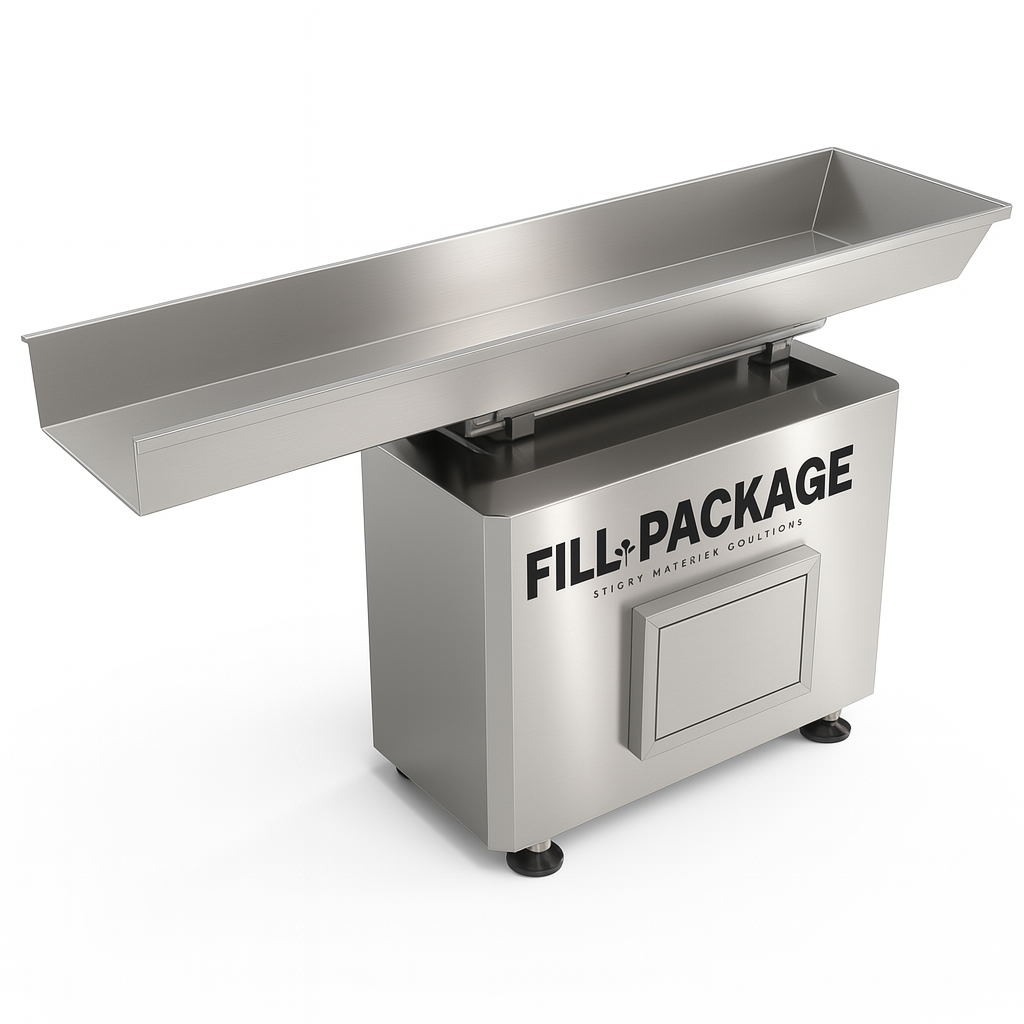Fastback Conveyors: The Future of Efficient Material Handling
Introduction
In modern industrial production, an efficient and reliable material handling system ensures smooth production lines. Whether in food processing, chemical production, or mining, the quick and safe transfer of materials directly affects production efficiency and product quality. Fastback conveyors stand out in many industries for their unique motion principles and superior performance. This article will explore how Fastback conveyors work, their key features, applications, and their role in the future of material handling.

How Fastback Conveyors Work
The Fastback conveyor operates on a unique “slow-forward, fast-backward” motion principle. During the forward motion, the conveyor moves slowly, allowing materials to stay stationary on the conveyor belt. In the quick return phase, the conveyor moves swiftly beneath the materials. This principle is like pulling a tablecloth quickly from under plates without disturbing them. This motion keeps materials from mixing or separating and ensures gentle handling, even for fragile items or mixed products.
This mechanism offers significant advantages over traditional vibrating conveyors, belt conveyors, and screw conveyors. Fastback conveyors have nearly no moving parts, reducing safety risks, and simplifying cleaning and maintenance. The low-noise, frictionless movement also prevents material breakage and seasoning loss, while effectively eliminating material buildup in the conveyor tray. This is especially beneficial for applications requiring careful preservation of material integrity.
Fastback Conveyor Features and Benefits
Fastback conveyors provide outstanding advantages across various applications:
- Универсальность: Whether handling fragile chips, sticky candies, or abrasive minerals, Fastback conveyors manage them all efficiently and gently. They handle dry snacks, granular products, flaked items, and even frozen foods.
- Sealing: Equipped with fully enclosed chutes, Fastback conveyors control dust, isolate pressure, and even cover materials with inert gases. This helps meet strict environmental control requirements.
- Multiple Inlets/Outlets: One Fastback conveyor can easily integrate multiple inlets and outlets for flexible material distribution, ensuring materials stay intact and don’t mix.
- High Capacity/Heavy Duty Applications: Fastback conveyors handle huge shock loads and deliver impressive transport capacity. Some models can carry materials up to three times their own empty weight, and certain models can transport over 600,000 pounds per hour.
- Measuring Capability: These conveyors can accurately measure materials without needing extra equipment. They are equipped with product alignment, single-file functions, and pneumatic gates for discharge control.
- Temperature Adaptability: They reliably operate in extreme temperatures, capable of handling materials up to 1,700°F (927°C) in certain applications.
- Easy to Clean: The seamless, integrated design of Fastback conveyors makes cleaning easier compared to other conveyor types. No complex support frames or springs collect dirt. Enclosed models can also be equipped with in-place cleaning (CIP) systems.
- Energy Efficiency: Fastback conveyors use less energy than sliding belt conveyors and screw conveyors. Their drive motors typically operate at lower power ratings, reducing operating costs.
Fastback Conveyor Applications
Thanks to their versatile performance, Fastback conveyors are widely used across different industries:
- Пищевая промышленность: They are favored for gentle handling and easy cleaning, ideal for fragile items like chips, biscuits, candy, and products requiring high hygiene, such as fresh chicken and salads.
- Snack Industry: Particularly effective for puffed products, chips/fries, dry snacks, and granular items.
- Химическая промышленность: They handle powder detergents, bleaching powder, and even corrosive materials using corrosion-resistant materials for the conveyor troughs.
- Mining Industry: Fastback conveyors are perfect for transporting fine, abrasive rocks and heavy materials, thanks to their wear-resistant properties.
- Other Industries: Fastback conveyors are also used in frozen food, extruded products, peanuts, and more. They can integrate seamlessly with bucket elevators and multi-head scales for high-capacity handling.
Fastback vs. Vibrating Conveyors
Пока vibrating conveyors are common in material handling, Fastback conveyors offer superior performance in key areas:
- Material Handling: Vibrating conveyors move materials using vertical vibrations, which may damage fragile products, cause seasoning loss, and result in material stratification. Fastback conveyors, using slow-forward and fast-backward horizontal motion, handle materials gently, significantly reducing breakage and maintaining material integrity.
- Wear and Maintenance: Vibrating conveyors generate friction between the trough and material, speeding up wear. Fastback conveyors, however, have far less wear on their troughs—up to two to four times less than vibrating conveyors. With fewer moving parts, they require less maintenance, cutting long-term operating costs.
- Noise and Environment: Vibrating conveyors produce considerable noise, while Fastback conveyors run quietly, improving the work environment. Fastback conveyors also seal better, controlling dust and offering better environmental isolation.
- Load Capacity and Measurement: Vibrating conveyors struggle with varying loads, which can affect performance. Fastback conveyors can handle higher loads with minimal impact on performance and accurately measure product flow, making them ideal for applications requiring precise control.
- Cost and Total Ownership: While Fastback conveyors may have a higher upfront cost, their advantages in energy efficiency, reduced maintenance, and lower material loss make them more cost-effective in the long run. This is especially true when handling high-value or fragile materials.
- System Integration: Fastback conveyors are designed to integrate seamlessly into production lines, working well with multi-head scales, packaging machines, and elevators. This integration enhances efficiency, boosts capacity, and optimizes the entire material handling system.
Заключение
Fastback conveyors redefine material handling with their unique “slow-forward, fast-backward” motion, delivering efficient, gentle handling for various materials. Their key advantages—such as reduced operational costs, low maintenance needs, and high energy efficiency—make them a superior choice for modern industrial applications. As industrial automation and smart technology continue to advance, Fastback conveyors will play a pivotal role in shaping the future of material handling, offering industries more efficient, eco-friendly, and safe solutions.

